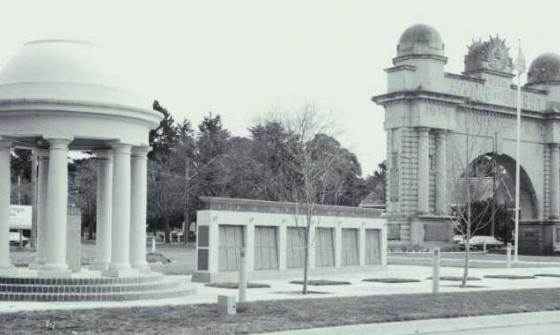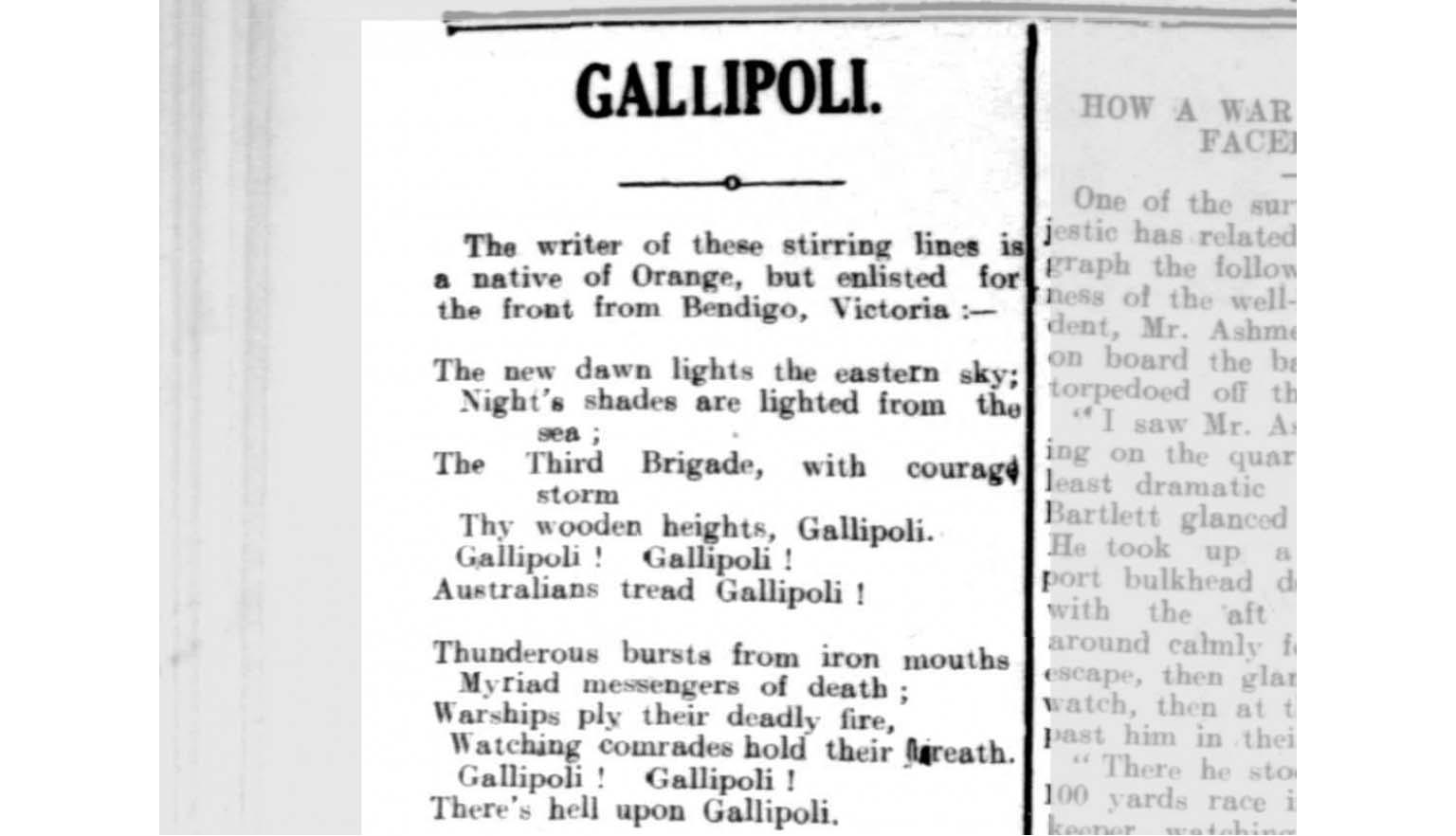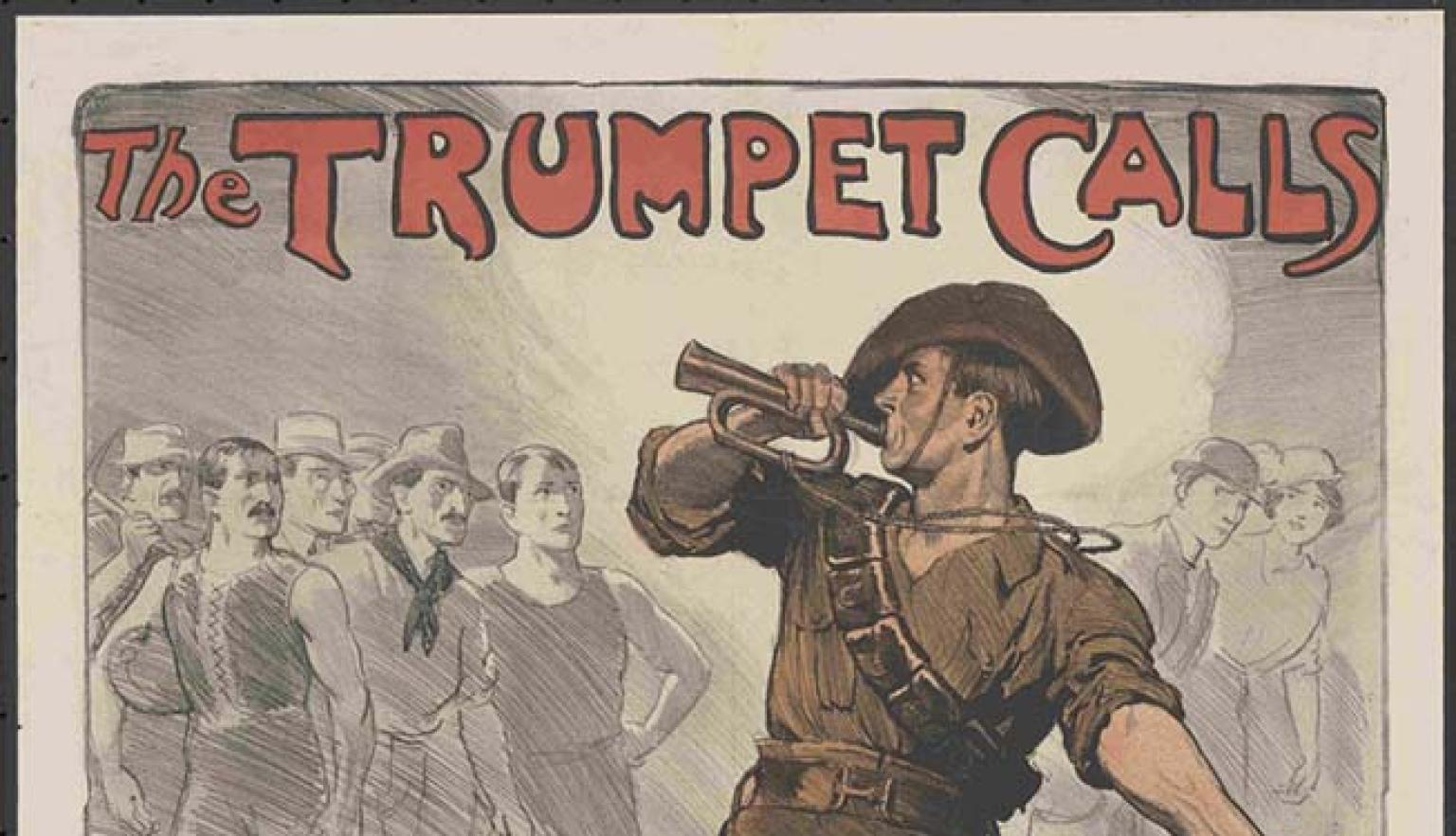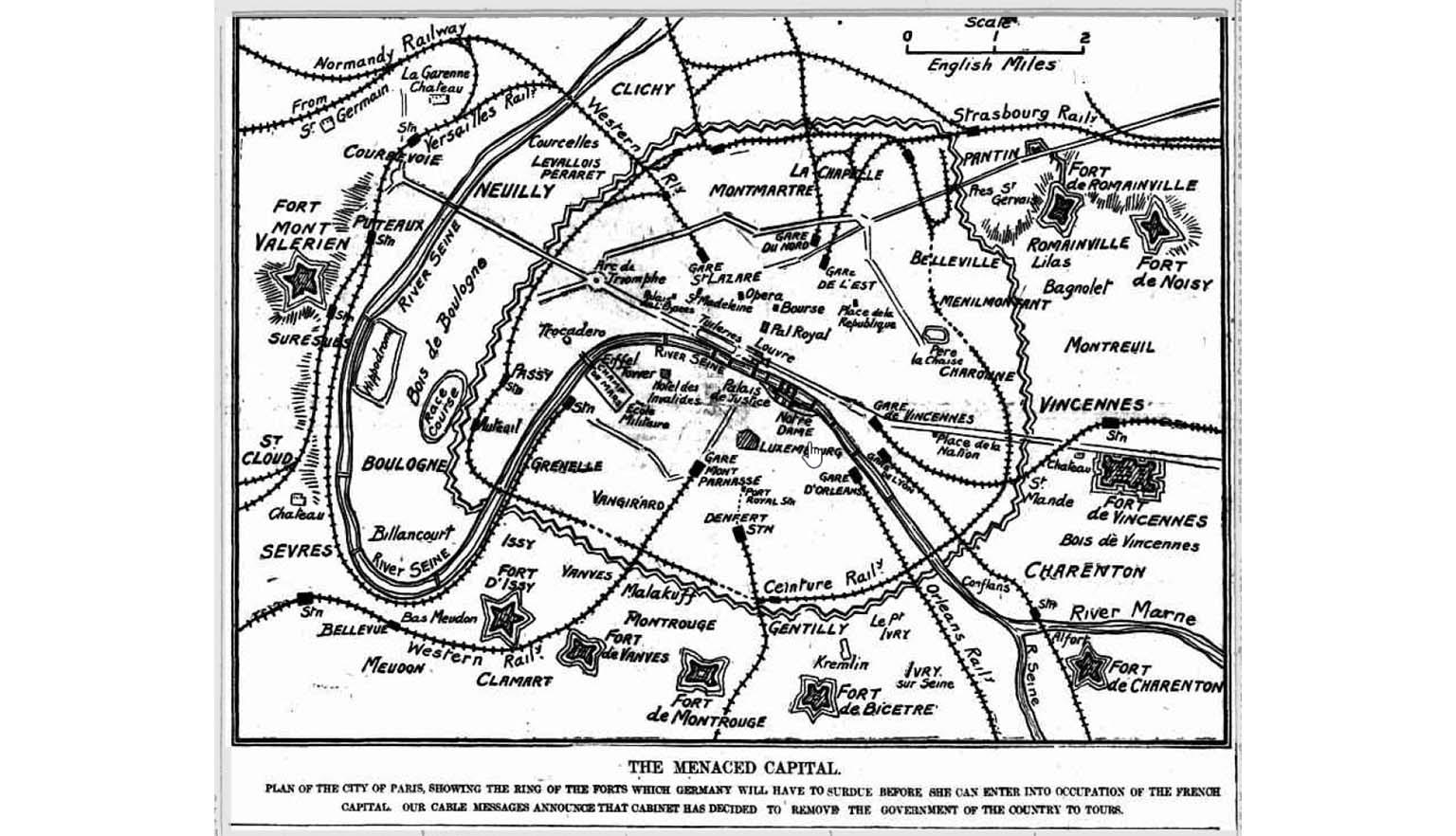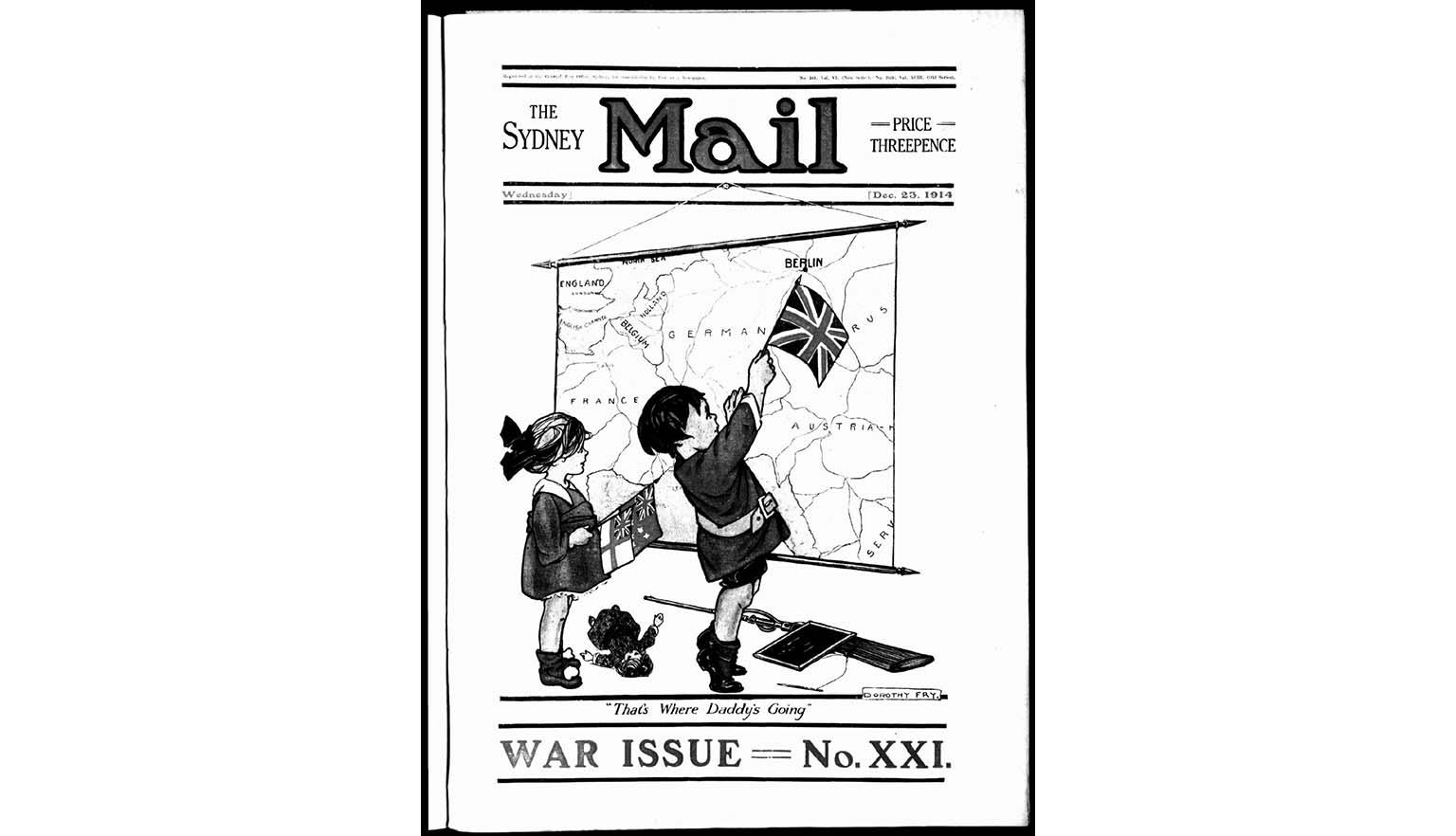World War 1
About this module
Using an inquiry-based approach, this module develops students' skills as historians through engaging historical sources. Featuring sources from the National Library's collections, the resource caters for flexible approaches to suit diverse classroom contexts and learning styles.
This Digital Classroom module is Treasures Gallery Access Program, supported by National Library Patrons.
For more information on how the public at home were informed of the progress of the war, see NLA Publishing's Where Are Our Boys? How Newsmaps Won the Great War.
National Library of Australia preserving wartime newsmaps
Copyright for teachers
You can download all collection materials in this resource for education purposes. For more information, go to copyright for teachers.
Topics in this module
This module is designed as a timeline of events, each year highlighting significant moments for Australia in World War I
The timeline explores the lead-up to World War I and Australia’s role in the war, using newspaper articles and newsmaps. It includes short summaries of the main campaigns involving the Australian Imperial Force and a detailed list of key battles.
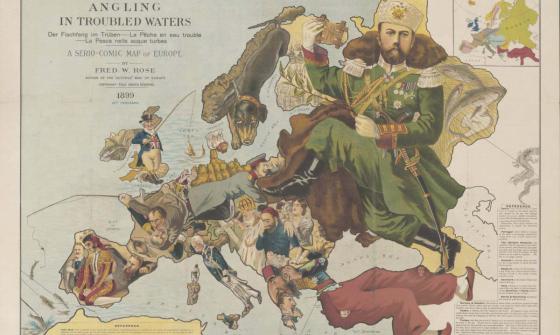
Fred. W. Rose, (Frederick W.) & Hewardine, Matt & G.W. Bacon & Co. (1899). Angling in troubled waters = Der Fischfang im Trüben = La pêche en eau trouble = La pesca nelle acque turbes : a serio-comic map of Europe / by Fred. W. Rose, author of the "octopus" map of Europe ; Matt. Hewardine, from design by Fred. W. Rose. nla.gov.au/nla.obj-232519231
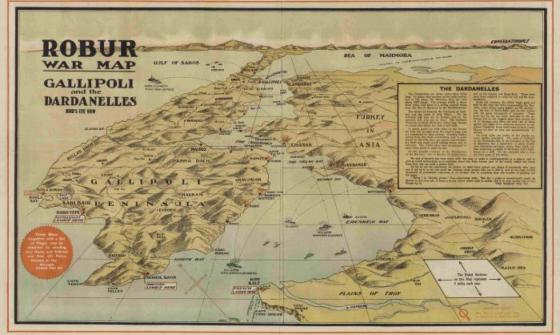
Farrow Falcon Press, issuing body & Dillon, Cyril. (1915). Robur tea war map, Turkish Empire ; Robur war map, Gallipoli and the Dardanelles : bird's eye view, nla.gov.au/nla.obj-2972839934
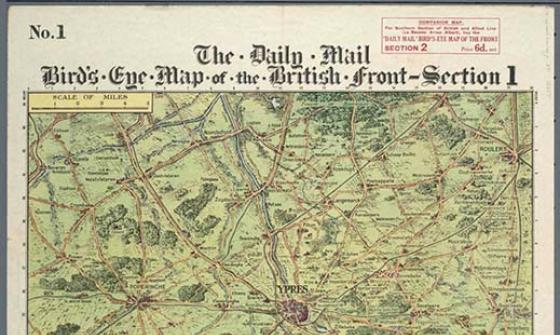
Daily Mail (London, England). (1916). The Daily Mail bird's eye map of the British front [cartographic material]. nla.gov.au/nla.obj-230052264
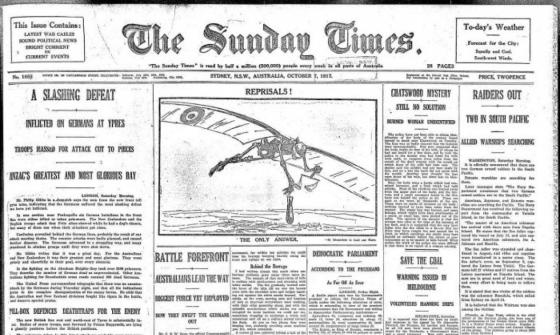
(1917, October 7). Sunday Times (Sydney, NSW : 1895 - 1930), p. 1. nla.gov.au/nla.news-page13215182

(1919, January 6). The Argus (Melbourne, Vic. : 1848 - 1957), p. 5 (The Argus War Review). nla.gov.au/nla.news-page402797
More to learn
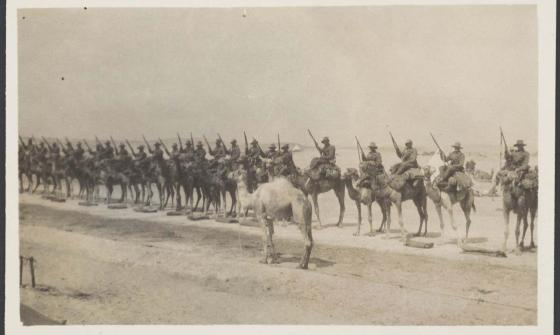
Imperial Camel Corps in Palestine, 1917-1918. nla.gov.au/nla.obj-153422443
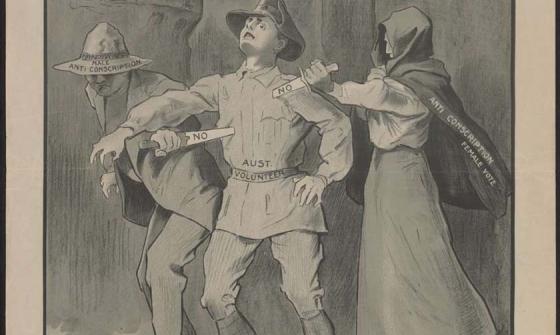
G. H. Dancey, (1916), The crime of those who vote "No!", nla.gov.au/nla.obj-136421813
Introductory activities
These activities build on students’ prior knowledge, introduce key concepts, and develop critical thinking about media during World War I.
Activity 1: Start the Conversation: Then and Now
Begin with a discussion comparing how we access news today versus in 1914. Explore how changes in communication affect what we know and how quickly we learn it.
Prompt questions:
- How do people get news today compared to 1914?
- How has technology changed the speed and reach of news?
- Can we always trust what we see in the media?
- How does fast news shape public opinion?
Key terms to cover:
- Official war correspondent
- Newsmap
- Propaganda
- Australian Imperial Force (AIF)
- Allies
- Monarchy
Background questions:
- Why did Australia enter WWI?
- How was the war reported in newspapers?
- What are the limits of print-only reporting?
- How might Australians at home have understood the war without TV or internet?
- How did media shape public views?
- Where can fact and fiction blur?
Media: Then and Now
Today:
We access news instantly—from websites, social media, apps and video platforms. The 24-hour news cycle includes voices from influencers and everyday users, not just journalists.
In 1914:
News came mainly from newspapers. War correspondents like Charles Bean and Ashmead-Bartlett reported from the front. With few photos, newspapers used illustrations, political cartoons, and newsmaps to tell the story and shape public opinion.
Newsmap examples
These examples show the various forms newmaps. This resource is referenced for use in Activity 1.
The Anzac Book was first published in 1916 and contained a collection of stories, poetry, cartoons, photographs and drawings from those who served on the frontline at Gallipoli. Edited by Australia’s official war correspondent Charles E.W. Bean, the book helped cement the Anzac ideology in readers’ minds. The collection highlighted the daily struggles faced by troops on the frontline, presenting a light-hearted insight into life in the trenches.
Full text of The Anzac book: written and illustrated in Gallipoli by the men of Anzac, Australian Imperial Force, 1916
- 'A present from home' page 64
- 'An ANZAC alphabet' pages 115-118
Gallipoli by Sergeant Sydney Bolitho is a powerful poem written by an Australian soldier who fought in the First World War. Drawing on his own experiences in the 1915 Gallipoli campaign, Bolitho captures the haunting beauty of the landscape and the deep sorrow of loss. With vivid imagery and heartfelt reflection, the poem honours the bravery and sacrifice of those who served, offering a poignant glimpse into the emotional legacy of one of Australia’s most defining wartime experiences.
The Trumpet Calls is a propaganda poster created by renowned Australian artist Norman Lindsay. The image shows a strong Australian soldier playing a trumpet (the call to arms) as he throws an accusatory look over his shoulder at a group of fit-looking civilian men in the background. In the foreground are four soldiers, also very fit-looking with determined faces, anticipating victory against the enemy.
Ashmead Bartletts Story of Dardanelles Overture, The Sunday Times (Sydney), 13 June 1915, p.3
The sources highlight the blurred line between fact and fiction that occurred during World War I, and the presentation of propaganda, which focused predominantly on the successes of campaigns and encouraged the recruitment of young men. This provides an interesting comparison between print media of the past and today’s journalism. It also highlights the need to scrutinise information carefully and critically analyse underlining messages.
Activity 2: Reading between the lines
As a class, examine the newsmap examples:
- The Anzac Book
- Gallipoli, Sergeant Sydney Bolitho
- The Trumpet Calls, Norman Lindsay
- Ashmead Bartlett’s Story of Dardanelles Overture, Sunday Times
Discuss each source using these guiding questions:
- Who published the source? Why is this important?
- What information is being communicated?
- How might the audience have felt when viewing this?
- Is the source primary or secondary?
- What is the main purpose of the source (e.g., inform, persuade, boost morale)?
What is in a newsmap?
As a class, take a closer look at Humoristische karte von Europa im Jahre 1914 (Humorous Map of Europe in the Year 1914) by Karl Lehmann-Dumont.
This caricature map shows how Europe looked at the start of World War I—through German eyes. It uses humour and exaggeration to highlight the tensions and alliances between nations, and reflects how Germany viewed its neighbours at the time.
Lehmann-Dumont was known for creating posters and postcards during the war. In this map, a character called Deutsche Michel (or "German Michael," a symbol of the German people) is dressed for battle. He has the Frenchman in a chokehold and is throwing a punch at the Russian Bear. Austria-Hungary is shown fighting cleverly against both Russia and Serbia, while a retreating France calls for England's help.
England, personified as John Bull, stands on a pile of moneybags, still distracted by issues in Ireland and India. Belgium appears as a squashed toad, already claimed by Germany. Turkey, recently wounded in the Balkan Wars, has recovered enough to cause trouble in southern Russia. Japan, linked to Britain through an alliance, is shown being pulled into the conflict.
This type of serio-comic newsmap wasn’t just for laughs, it helped people make sense of a complex war, often from a biased or nationalistic perspective.
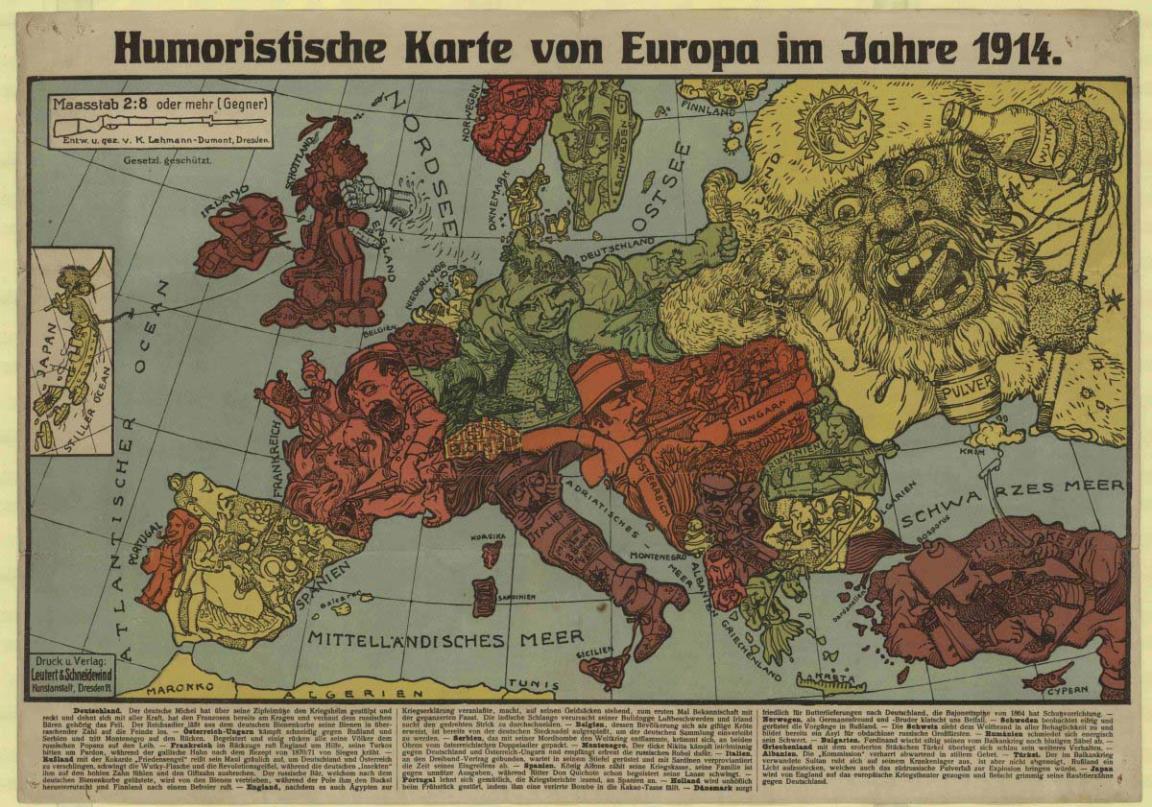
Karl Lehmann-Dumont, Humoristische karte von Europa im Jahre 1914, nla.gov.au/nla.obj-234418904
Karl Lehmann-Dumont, Humoristische karte von Europa im Jahre 1914, nla.gov.au/nla.obj-234418904
Activity 3: Mapping perspectives and sources
Examine the caricature map as a class and discuss:
- What symbols represent each country? What do they suggest?
- Why might the public have found these maps engaging or persuasive?
- What can we infer about the author’s point of view and national bias?
- Does knowing the author is German change how we read the map?
- Where do we see similar commentary through caricature in today’s media?
The following images are newmaps published in various Australian newspapers between 1914 and 1918.
Activity 4: Investigating visual storytelling
Have students select a newsmap to analyse. Suggested examples include:
- The Sydney Mail 23 December 1914, p.1
- ‘Theatres of the Great War’, The Daily Telegraph (Launceston, Tas.), 29 May 1915, p.1
- ‘The Menaced Capital’, The Register (Adelaide), 4 September 1914, p.5
Or encourage students to find their own using Trove.
Use the following questions to support students’ interrogation of the newsmaps:
- Who published the newsmap?
- What symbols are presented in the map?
- What message is the newsmap trying to convey?
Concluding activity
Activity 5: Designing modern media from the past
1. Explore and research
Using the timeline and Trove, explore a WWI battle involving Australian troops. Encourage students to gather information from a range of primary and secondary sources.
2. Design a modern newsmap
Ask students to create a modern interpretation of a World War I newsmap. They should draw on what they’ve learned about how journalists and war correspondents work.
When designing their newsmaps, students should consider:
- using symbols and colour to represent different ideas
- incorporating graphics, photographs and text
- using digital tools or software
3. Explain the design
Students should explain their design, choices, influences, and sources.
4. Share through social media
Create a class or individual Twitter, Instagram or other social media account. Ask students to create posts for a digital timeline that includes:
- significant dates and events
- personal stories
- interesting facts
- Have students upload their posts to share with others
5. Extension of exploration
This activity can be adapted for other conflicts involving Australian forces, such as Vietnam, Korea, Iraq or Afghanistan.

Frank Dunne and Smith's Weekly, Portrait of ANZAC soldier for Smith's Weekly, between 1919 and 1937, nla.gov.au/nla.obj-452465819
Frank Dunne and Smith's Weekly, Portrait of ANZAC soldier for Smith's Weekly, between 1919 and 1937, nla.gov.au/nla.obj-452465819
Curriculum links
This resource aligns with the Australian Curriculum: History for Year 9 students in Humanities and Social Science.
The resource meets cross-curriculum priorities and promotes the use of historical skills such as analysis and use of sources, perspective and interpretations, and explanation and communication.
- analyse cause and effect, and evaluate patterns of continuity and change (AC9HH9S05)
- Analyse different and contested historical interpretations (AC9HH9S07)
- Create descriptions, explanations and historical arguments, using historical knowledge, concepts and terms that incorporate and acknowledge evidence from sources (AC9HH9S08)
